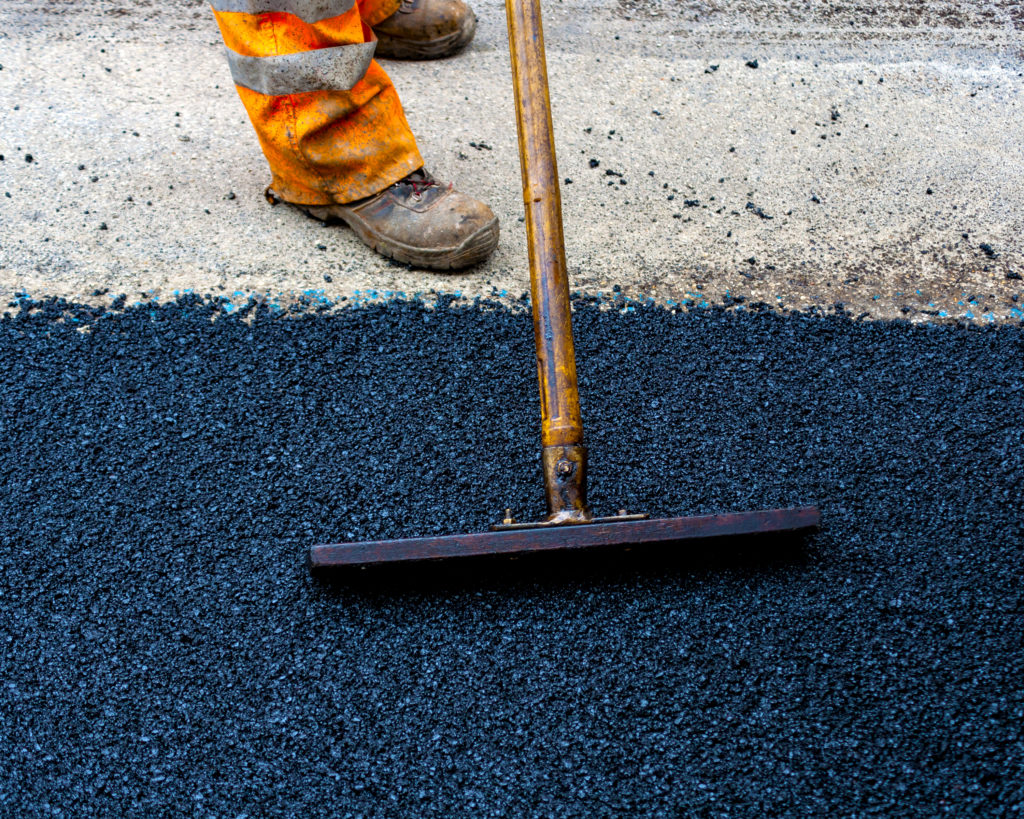Opening the Tricks of Warm Mix Asphalt Technology
Exploring the midsts of warm mix asphalt modern technology uncovers a world where specific formulas and thorough procedures converge to form our roads and framework. The combination of binders, accumulations, and fillers isn't merely a construction job yet a strategic orchestration of resilience and effectiveness. As we peer into the elaborate dance of elements, a tapestry of resilience and sustainability unravels. What lies below this surface of asphaltic proficiency, and what keys wait to be revealed in the world of leading developments?
Significance of Hot Mix Asphalt
Warm Mix Asphalt plays an essential function in contemporary facilities advancement as a result of its resilience and cost-effectiveness. As one of the most generally utilized paving product for roadways, freeways, and car park, Hot Mix Asphalt supplies a series of benefits that contribute to its relevance in building jobs. One key advantage is its ability to stand up to rush hour tons and rough climate condition, giving a resilient and trustworthy surface area for transportation networks. Additionally, Warm Mix Asphalt is affordable in both initial construction and long-term upkeep, making it a preferred selection for lots of infrastructure projects.
The resilience of Warm Mix Asphalt stems from its make-up, which consists of accumulations, binder, and filler materials that are thoroughly chosen and blended to meet details efficiency requirements. On the whole, the relevance of Hot Mix Asphalt in infrastructure advancement can not be underrated, as it continues to be a cornerstone of contemporary building and construction methods.
Parts of Asphalt Mixes
The structure of asphalt blends contains carefully picked aggregates, binder, and filler materials that are crucial for attaining particular efficiency demands. Aggregates are the key component of asphalt mixes, giving toughness and security. These accumulations can be natural, such as crushed rock or smashed stone, or artificial, like recycled materials from old pavements. The binder, typically bitumen or asphalt concrete, holds the accumulations with each other and supplies adaptability and sturdiness to the mix. The selection of the binder is crucial as it directly influences the mix's performance in different climate condition. Fillers, such as hydrated lime or Portland concrete, are made use of to boost the mix's workability and aging resistance. Angled Parking.
The mix and proportion of these elements play a substantial duty in determining the high quality and performance of the asphalt mix. Designers meticulously develop the mix to meet particular requirements, considering aspects like website traffic quantity, environment conditions, and sidewalk life-span. Correct option and balancing of aggregates, binder, and fillers are crucial for producing resilient, resilient asphalt pavements.
Mixing and Production Strategies

Once the aggregates are selected, the binder, usually get redirected here asphalt concrete, is contributed to bind the materials together. The binder's high quality and quantity dramatically influence the mix's resistance, adaptability, and stamina to ecological elements. Furthermore, fillers like moisturized lime or Portland cement may be incorporated to improve certain attributes of the asphalt mix, such as its workability or moisture resistance.
Throughout manufacturing, the accumulations and binder are warmed, usually between 250-325 ° F(121-163 ° C ), to help with mixing and make sure proper finishing of the accumulations. The blending procedure has to be extensive to accomplish an uniform mixture that promotes the wanted performance qualities of the asphalt. Numerous strategies, such as set blending or drum blending, are employed to accomplish high-grade and constant asphalt mixes for building tasks.
Factors Influencing Asphalt Efficiency
Variables affecting asphalt performance incorporate a variety of variables that impact the sturdiness, long life, and overall top quality of asphalt pavements. One vital variable is the quality of materials used in the asphalt mix.

Layout considerations, such as pavement thickness and water drainage, are necessary in making certain the long-lasting efficiency of the asphalt pavement. By very carefully taking into consideration these engineers, service providers and elements can maximize asphalt efficiency and boost the service life of sidewalks.
Lasting Practices in Asphalt Innovation

Furthermore, the growth of warm-mix asphalt (WMA) modern technologies has actually obtained grip recently. WMA enables the production and positioning of asphalt blends at reduced temperature levels compared to conventional hot-mix asphalt, resulting in minimized energy consumption and greenhouse gas discharges. The usage of permeable asphalt mixes can aid mitigate stormwater runoff problems by permitting water to penetrate with the pavement and visit our website into the ground, promoting all-natural water purification and reenergize procedures. By carrying out these lasting methods, the asphalt market can add to building an extra resilient and ecologically friendly framework network.
Verdict
In final thought, hot mix asphalt modern technology plays an essential role in modern-day facilities growth as a result of its resilience and cost-effectiveness. By very carefully balancing parts, utilizing appropriate blending techniques, and considering numerous factors, engineers can produce top quality asphalt blends that withstand heavy traffic loads image source and severe weather. Welcoming lasting methods, such as using recycled materials and warm-mix technologies, even more improves the ecological kindness of asphalt technology.
Mixing and production strategies in hot mix asphalt innovation involve the accurate mix and handling of accumulations, binder, and fillers to develop a durable and high-performance asphalt mix.Factors influencing asphalt efficiency include a variety of variables that affect the durability, durability, and overall quality of asphalt sidewalks. Lasting techniques in asphalt technology include various initiatives intended at minimizing the ecological influence of asphalt manufacturing and paving processes. By integrating recovered asphalt pavement (RAP) and recycled asphalt roof shingles (RAS) right into brand-new asphalt mixes, the industry can significantly minimize the consumption of raw materials and power, while also reducing land fill waste.
WMA allows for the manufacturing and placement of asphalt blends at lower temperature levels contrasted to conventional hot-mix asphalt, resulting in decreased energy intake and greenhouse gas emissions.